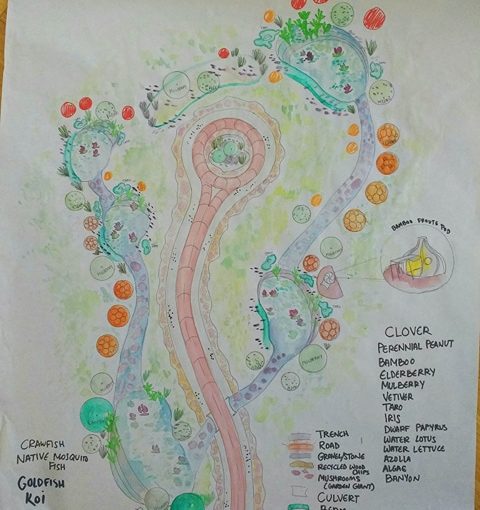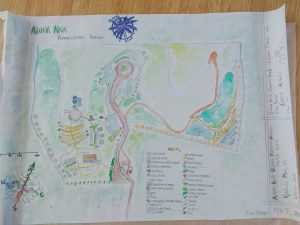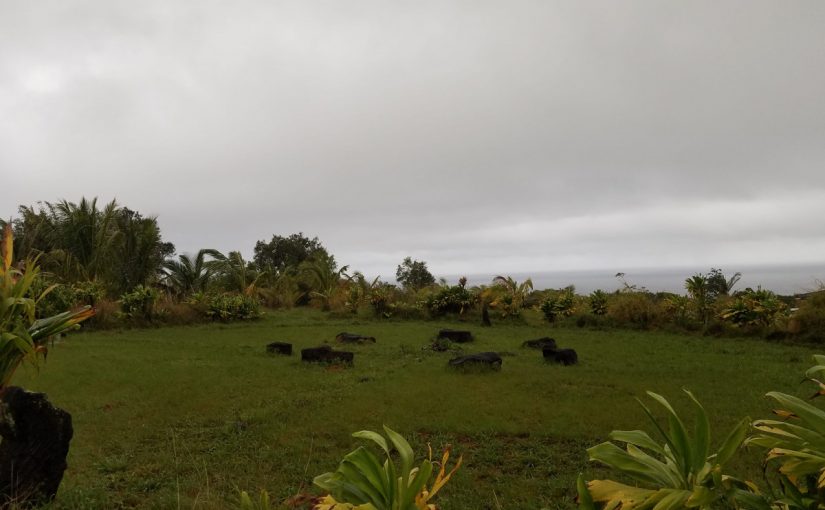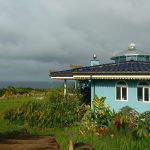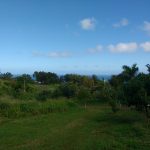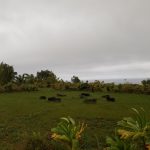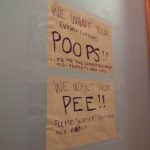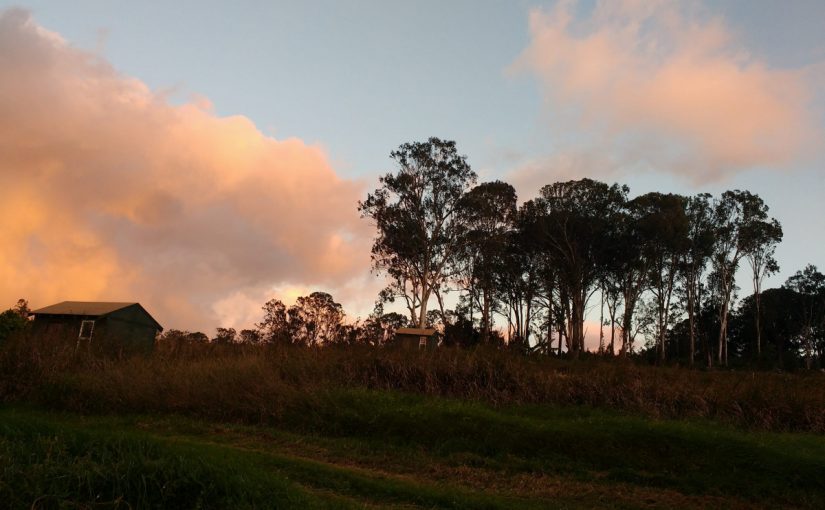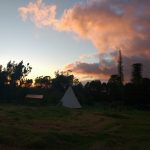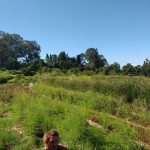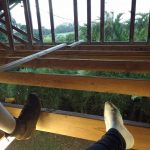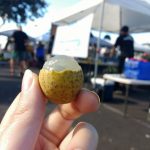This week was our last together in the Permaculture course. Sunday I left Whispering Winds with another student after we had packed up to get a look of the other side of the island. Eventually we made our way back to Hale Akua, the last location for our tour. This magical place is a jungle hotel off the Hana highway near Haiku complete with real beds, private bathrooms and showers, salt water pools, saunas, and hot tubs overlooking a misty waterfall. However, with the due date of our projects so near- I wasn’t able to really revel in this place as much as I would have liked to. On Monday we had lecture in the yoga studio that touched on finishing points about designing for clients. Jenny and Evan brought sample designs and sketch-ups of their work from past jobs to give us direction for the projects we were designing. That afternoon we attempted to tour the beautiful farm on Hale Akua- but the torrential jungle rain cut our tour short and continued for the rest of the week so that only a portion of the farm was explored. I can’t tell you how happy I was to not be in a tent for this very wet weather. The next day we met Gabriel Howearth who was one of the original founders of the Seeds of Change organization that has saved and shared seeds in order to save entire plant species from existence. For example, we were told that amaranth and quinoa would not be available to grow today without Gabriel’s work. He touched on the great importance of seed saving and enchanted us with details about using Sonic Bloom (certain frequencies and songs at specific times of the day) to stimulate plant health. He also touched on several propagation and seed saving methods. Gabriel and his business partner are starting a farm in HI called Ono Gardens where he will help teach what he knows to the interns and students that they hope will visit.
For my design project my group was tasked to design for a property in Kipahulu that Spencer will be leasing. This project was very tricky because Spencer is leasing land from a Texas developer who wishes to turn it into tea production fields and expensive manor housing. Not only that but the property has a 1400 ft change in elevation within just one mile. The developer has already started work on roads and maintenance buildings that he wants to put in, so Spencer is compromising with him on some parts but also utilizing part of the land to grow a nursery business that he hopes will be prosperous enough to fund a buyout of the land. Much of the design we came up with adjusts the developer’s plans, focuses on the immediate future of the nursery, and includes a long term plan to respect the old Loi’ farms and native graves on the property while also inviting in community relationships. It took a lot of time to finish this project, but our group very easily kept peace with each other while the storms around us raged (and by storms I mean the fighting and frustrations of other groups).
After little sleep Tuesday night we presented Wednesday morning. It was really wonderful to see how differently each group thought about their design projects and the strengths that each person brought. After lunch we had some activities to boost self confidence and after dinner we had a mandatory talent show. For this I wrote a poem about the ocean. Some people wrote songs, sang opera, Alanna even played harmonica! I wanted to celebrate the completion of our course but after the talent show and slide show of pictures from the course, everyone was exhausted.
The next day we had to prepare for check out, ate a lovingly made brunch (our last meal from the beloved Taryn and Chance), and met in the yoga studio to be awarded our certificates and say our goodbyes. On Tuesday, Jenny had offered to take me on as her intern as long as I could find a place to stay for the month. Only two of the farms we visited were taking interns and Alanna filled the position at Whispering Winds. Ahimsa was still available but that required tent camping and a lot of heavy labor because the farm has been overgrown. Unfortunately the climate and the limited time to rest took a toll on my health and I did not see this as a healthy option for me. Jenny had also contacted HAPI farms and asked others if they could use someone with my business and marketing expertise- but I knew I would learn more working with her for a month. So in between finishing projects and packing up my bags I had still not found a place to live and was allowed to stay in a spare bed at Hale Akua Thursday night since staff were staying one more night. Luckily, a stranger that gave me a ride back from Open Mic on Thursday told me the next day while I was out with staff member Elise and her partner (so I could stay local to Haiku since Spencer went back to Kipahulu) that he worked out a situation with his landlord so I could stay in the house a few days until he moved out. So, my new home for the month is where I am now, just a ten minute walk from Jenny’s offices at little house down the road surrounded by fruit trees, jungle scenery, and a LOT of wild chickens.
